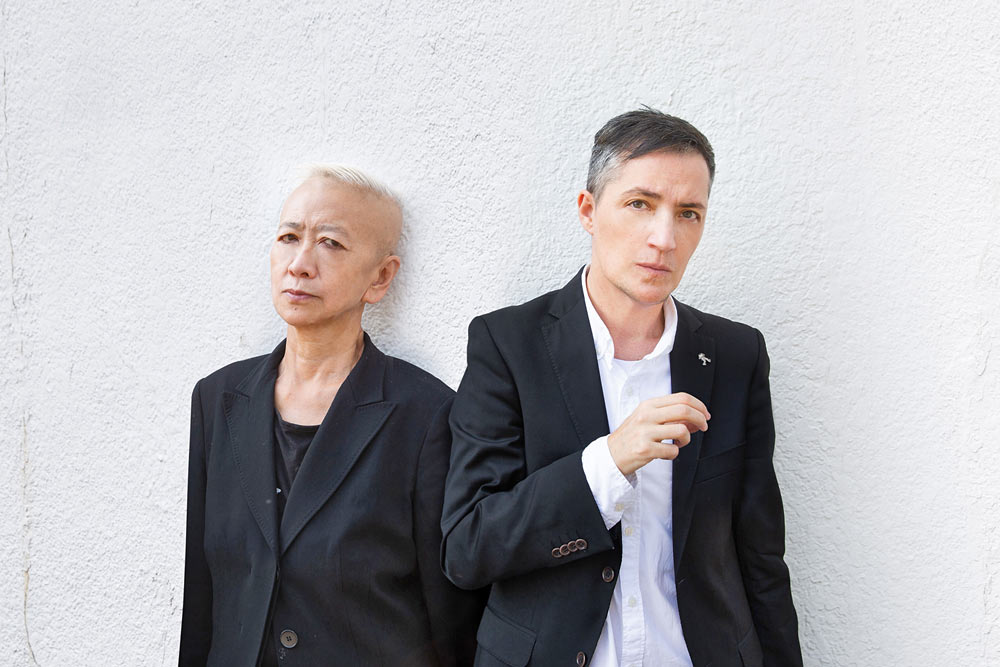For an optimal view of our website, please rotate your tablet horizontally.
58th International Art Exhibition, La Biennale di Venezia
11 May - 24 November 2019
Artist: Shu Lea Cheang
Curator: Paul B. Preciado
Commissioner: Taipei Fine Arts Museum
Venue:
Palazzo delle Prigioni
Address, opening hours, map
Symposium
Isola di San Servolo, 11 May 2019

Shu Lea Cheang and Paul B. Preciado © TFAM
Soon after the World Wide Web was made available for public access in 1990, artist Shu Lea Cheang, armed with her creativity and imagination, embarked on a journey to expand new media beyond known functions of digital communication. She connected virtual networks with spaces in the real world and initiated creative, performative, and action-based projects.
For Taiwan’s collateral presentation Cheang created a new work inspired by the history of the exhibition venue, Palazzo delle Prigioni, which first served as a prison in the sixteenth century. The work’s title refers to today’s standardized architecture of industrial imprisonment: a 3 x 3 square-meter cell constantly monitored by 6 cameras. 3x3x6 speaks to the realities of imprisonment constructed physically and by the presence of digital surveillance mechanisms. In light of these folded conditions, the artist transforms the Prigioni into a high-tech surveillance system to rethink how contemporary technologies of communication and surveillance are shaping identities.
Related to ten cases of imprisonment due to gender, sexual, and racial nonconformity, both past and present, including Giacomo Casanova, Michel Foucault, and Marquis de Sade, 3x3x6 questions the legal and visual regimes that have formed sexual and gender norms over time. Specifically, Cheang’s exhibition looks to the conditions of incarceration that are becoming increasingly omnipresent in today’s world: for example, the inescapable big data used in technological surveillance and the application of facial identification for social control. She uses the site of Venice’s old prison to create a glitch in its histories via a real-time interface that the visitor is invited to join.
3x3x6 spans four rooms of the Prigioni with an immersive, multidimensional installation. Departing from the architecture of the pan- opticon invented by Jeremy Bentham in the late eighteenth century, Cheang constructs the exhibition around a rotating and inverted surveillance tower: her panopticon is a newly developed 3-D camera surveillance system that simultaneously projects the portraits of the ten case studies. The exhibition challenges the usual positions of observer/observed. From the moment the visitor elects to enter the exhibition they become implicated within the system—their faces are scanned and their image later modified. Here, gender and racial morphing become queer digital strategies to disrupt the tradition of colonial and anthropometric identification techniques, which extend from Alphonse Bertillon’s criminological photography of the nineteenth century to today’s facial recognition technologies. Connected to the Internet, 3x3x6 in turn allows visitors (physical and virtual) to send selfies and images to the exhibition system. The exhibition visitors are thus inside the total surveillance apparatus.
The Failures of Electronic Discipline:
A Symposium of Gender and Sexual Outlaws
11 May 2019, 4 - 7 p.m.
Psychiatric Hospital Museum of San Servolo
(Isola di San Servolo, Venice)
On May 11, as part of the opening events of the exhibition, Cheang and Preciado hosted the public program “The Failures of Electronic Discipline: A Symposium of Gender and Sexual Outlaws.” Taking place at the historic site of the Psychiatric Hospital Museum on San Servolo island, which was until the 1970s an institution of confinement for the so-called mentally ill, the event involved critics, academics, and writers including Fuller and Jack Halberstam, as well the performers who embody the characters of CASANOVA X, SADE X, FOUCAULT X and D X. Between fiction and history, critical theory and utopia, the event took shape as a queer performative encounter of dissidents of the patriarchal and colonial regime.
Organizer:
Taipei Fine Arts Museum
Taiwan
Website | Facebook
Official website:
www.taiwaninvenice.org
Artist's Online Project:
3x3x6.com
Press contacts:
Yumei Sung
yumei(at)tfam.gov.tw
Tzu-chin Kao
tckao(at)tfam.gov.tw
#3x3x6 #ShuleaCheang #PaulBPreciado #TaiwaninVenice #TaipeiFineArtsMuseum
Download Catalogue
The publication includes critical essays Paul B. Preciado, Matthew Fuller, Dean Spade, and Jackie Wang.
From press information. Images top: Still from CASANOVA X and views of the installation, © Shu Lea Cheang. Courtesy of the artist and Taiwan in Venice 2019
Palazzo delle Prigioni
Castello 4209, San Marco
Opening hours:
Tue - Sun, 10 a.m. - 6 p.m.
Also open on 13 May, 2 Sept., 18 Nov.
Guided tours:
Twice a day from 11 May - 27 Aug. 2019